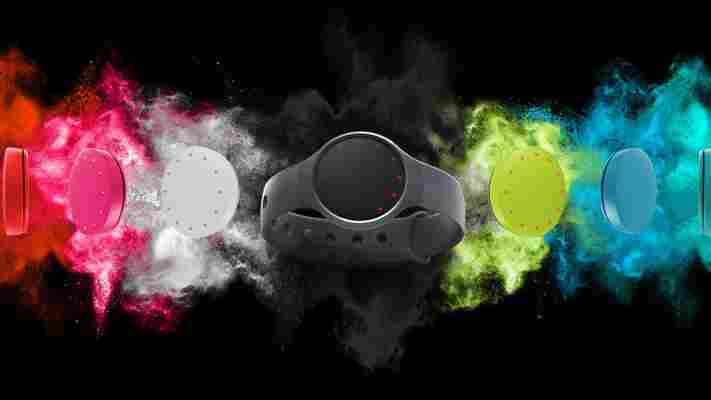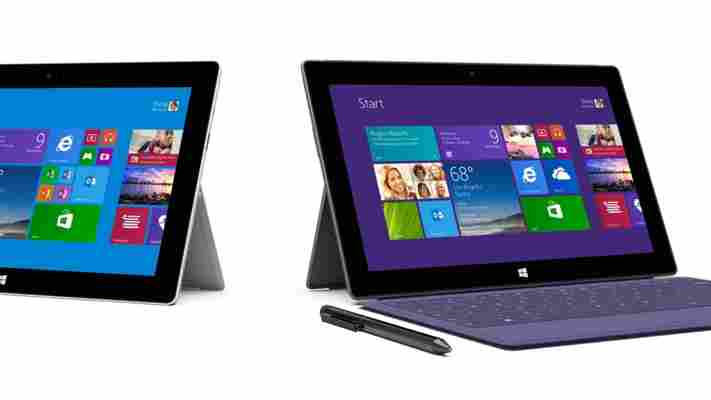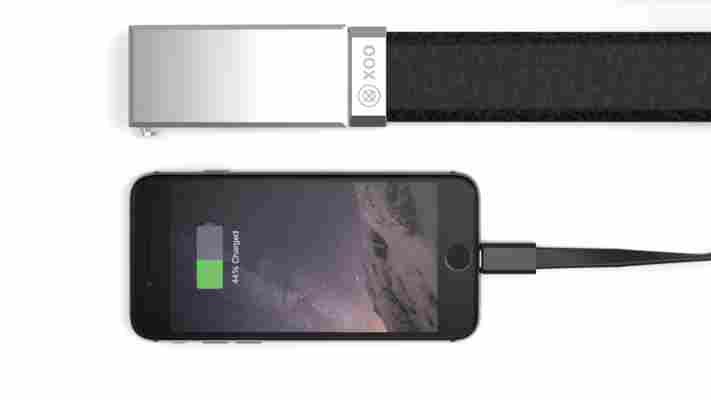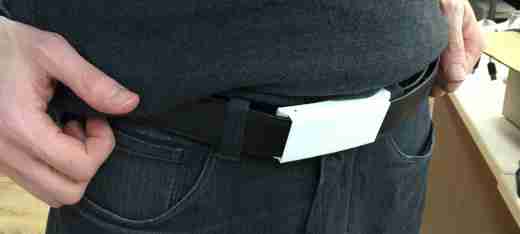If you’re looking for an inexpensive way to track your health and fitness, Misfit’s colorful new Flash wearable might be worth considering.

The company is hoping to differentiate on price – across the US it’ll be sold for only $49.99, which is cheaper than some competitors such as the Nike+ FuelBand and Jawbone UP. Similar to its previous effort, called the Shine , the Flash doesn’t come with a traditional display and, therefore, requires a companion app when you want to properly review your data. On the plus side, it doesn’t require charging and the replaceable battery lasts up to six months.
The Flash comes in a range of psychedelic colors which should appeal to athletes that train in equally bright attire. A circle of LED lights will give you an indication of your daily progress – the more that are lit up, the closer you are to your 24-hour goal. It promises to track running, cycling, swimming and other sports.
➤ Misfit Shine
Microsoft announces 64GB Surface 2 with 4G LTE on AT&T, available for $679 at Microsoft Stores and Best Buy
Microsoft today announced the Surface 2 with AT&T 4G LTE support, a 64GB version of the Surface 2 tablet that also features mobile broadband. The device is available now for $679; given that the Surface 2 without LTE retails for $549, you’re paying an extra $130 to ensure you’re (almost) always online.

Curiously, Microsoft chose to announce the device after it already appeared in its retail stores and at Best Buy,last week on March 11. Nevertheless, all the details are now available, and we can see exactly what the company wants to share about its latest device.
In addition to mobile broadband, the extra cost on top of the Surface 2 will also get you free Skype calling to landlines in more than 60 countries for one year, unlimited Skype Wi-Fi (which Microsoft touts is available at over 2 million hot spots worldwide) for one year, and 200GB of free OneDrive storage for two years. None of these are huge on their own, especially given that they only last for a limited time, but they do make the price tag look slightly more appropriate.
Everything else is the same: the Surface 2 with LTE comes with a 10.6-inch touchscreen (1920×1080 resolution), NVIDIA Tegra 4 processor, Windows 8.1 RT, Office 2013 RT, two-position kickstand, full-size USB 3.0 port, 3.5MP front camera, 5MP back camera, as well as compatibility for the optional Touch Cover and Type Cover. The only real difference in the specifications is the weight: the Surface 2 is 1.49 pounds while the LTE version is “less than 1.51” pounds.
Since the device is for AT&T, here are the plans customers will have to choose from:
Prepay: Data Connect Pass 250MB ($15), Data Connect Pass 3GB ($30), and Data Connect Pass 5GB ($50).
Postpay: Mobile Share $10 per month to share, Data Connect 250MB ($15), Data Connect 3GB ($30), and Data Connect 5GB ($50).
International: Data Connect Month Pass 120MB ($30), Data Connect Month Pass 300MB ($60), and Data Connect Month Pass 800MB ($120).
Microsoft first announced the Surface 2 and Surface Pro 2 back in September 2013 . Later in the day, Panos Panay, Corporate Vice President of Microsoft Surface, revealed plans to release an LTE version in early 2014.
Unfortunately, Panay didn’t specify whether he meant the Surface 2 or the Surface Pro 2, and it appears only the former tablet-laptop hybrid is getting the option, at least for now. Pro fans will be disappointed to learn that when we asked, a Microsoft spokesperson merely told TNW that the company has “nothing to share.”
In today’s announcement, Panay did say that 2014 will be “an exciting year for Surface” but wouldn’t go into any details. It’s safe to say the Surface 3 and Surface Pro 3 are probably in the works.
This belt charges your smartphone and keeps your trousers up at the same time
Until someone develops an inexpensive smartphone battery that can last a week, portable batteries will be a popular accessory. The trouble is, they’re bulky and easy to lose. Enter Nifty ‘s new XOO Belt, which has just launched as a crowdfunding campaign on Indiegogo . After all, you can’t lose a battery if you’re wearing it, right?

Nifty made its name with the Minidrive , a tiny storage expander that fits into the SD Card slot on Apple laptops. On a recent trip to China, co-founders Piers Ridyard and Steve Levy discovered a new type of flat, flexible battery that hadn’t been built into a commercial product yet. After some thought about how they could put it to use, they decided on a belt/battery combo,
Yesterday, I visited Nifty’s Manchester, UK base to give a prototype XOO Belt a try. It looks very much like a standard belt, except the buckle is a little larger than normal. That’s because of the 2,100 mAh of battery capacity available, 1,300 is inside the belt, and the remaining 800 is in the buckle.
The battery in a prototype buckle (L) and an example of the type flexible battery inside the belt (R)
Splitting the capacity like this means that the battery need only to take up half the belt, and Nifty can offer different lengths with the same spec. It wouldn’t be fair if skinny people got less bang for their buck than their larger friends, after all.


Once the XOO Belt (pronounced ‘zoo belt’) was tightened, it was time to charge my phone. A short MicroUSB lead attached to the buckle was loosely tucked against my waist on the prototype but it will be more neatly attached to the back of the belt using a magnet in the production version.
Charging my Nexus 5 was as simple as popping out the lead and attaching the phone. iPhone users will be able to use a Lightning adapter. The idea is that you’ll be able to keep your phone in your pocket, or use it without too much inconvenience, while charging. There’s enough capacity to charge many smartphones completely, and the belt takes around three hours to discharge completely.
Recharging the belt is as simple as connecting it up to a computer or the mains via a MicroUSB port in the buckle. A full recharge should take three hours.
The belt is separate from the buckle so that in the future, owners can easily upgrade the strap without replacing the whole device. This could be to add extra capacity or to get a whole new look. Nifty wants this to be as much about fashion as it is utility. The startup has been working with London-based design house Casely-Hayford to ensure that the finished device will look stylish, and alternative looks will be available over time.
After having found success on Kickstarter with the Minidrive, Nifty is experienced with crowdfunding. Levy says the company switched to Indiegogo this time in part because the main target market is the US, and raising funds in US dollars is tricky for a UK company on Kickstarter.
In less than 24 hours, Nifty has passed the half-way mark towards its target of $50,000. Securing yourself a belt will cost you $155, or you can donate $5 as an ‘armchair supporter’. Funds raised on Indiegogo will pay for tooling and production costs, and Nifty aims to ship the XOO Belt in July 2015.
➤ XOO Belt by Nifty [Indiegogo]
